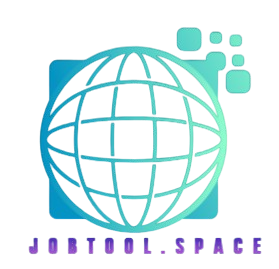The Foundation: Understanding Code and Logic
In the realm of Information Technology (IT), the fundamental concepts of coding and logic are paramount to the development of software. Coding serves as the primary means of instructing computers, enabling individuals to create programs that fulfill various functions. At its core, coding relies on specific programming languages, each with its unique syntax and semantics. Understanding the characteristics of languages such as Python, Java, and C++ is critical, as it allows IT professionals to select the most appropriate tool for their tasks.
One essential aspect of coding is the understanding of algorithms, which provide a structured approach to problem-solving. An algorithm is a precise set of rules or instructions designed to perform a specific task. Mastering algorithms enhances a coder’s efficiency by streamlining processes and reducing redundancy. Coupled with algorithms is the concept of flow control, which dictates the order in which instructions are executed. Flow control structures, such as loops and conditionals, enable the manipulation of program execution paths, allowing for dynamic and responsive applications.
The importance of logical thinking cannot be understated within the realm of software development. Logical reasoning helps coders analyze problems systematically and devise effective solutions. This skill is particularly valuable when addressing complex issues that arise during the development process. Key concepts such as variables, which store data values, functions that encapsulate reusable code, and data structures that organize information, form the skeletal framework of effective coding practices.
As IT education progresses, a solid grasp of these foundational concepts equips students to tackle more advanced topics with confidence. By understanding the building blocks of coding and logic, aspiring developers can embark on a successful journey in the ever-evolving world of technology.
Bridging the Gap: From Theoretical Learning to Practical Coding
The journey from theoretical knowledge gained in IT education to the practical world of coding can often be challenging for many learners. While formal education provides a solid foundation in programming concepts, learners frequently encounter difficulties when attempting to apply these concepts in real-world scenarios. One of the main challenges is understanding how to transfer theoretical principles to practical coding applications, which requires not only technical proficiency but also problem-solving abilities.
To navigate this transition, hands-on project work is essential. Engaging in real-life coding projects allows learners to solidify their understanding of programming concepts while showcasing their skills. These projects can come in various forms, such as open-source contributions, community coding tournaments, or collaborations with peers on personal projects. By taking part in such initiatives, learners gain experience that is not typically acquired in traditional classroom settings, preparing them for future challenges they may face in a professional environment.
Moreover, resources like coding boot camps and internships play a crucial role in bridging this gap. Coding boot camps are intensive training programs designed to immerse learners in practical coding environments, often focusing on in-demand technologies. These programs typically emphasize hands-on coding exercises, fostering an agile learning environment that enables students to learn by doing. Similarly, internships provide invaluable work experience, allowing learners to apply their knowledge, receive mentor feedback, and develop essential workplace skills.
Additionally, community coding projects offer opportunities to collaborate with others, which is vital for building teamwork and communication skills. By engaging in such projects, learners can enhance their coding expertise while contributing to meaningful initiatives. Therefore, a multifaceted approach that combines theoretical education with hands-on experiences and community involvement serves as an effective pathway for learners aiming to master the art of coding.
Results-Oriented Education: Tracking Progress and Outcomes
Measuring the success of IT education is crucial for both educators and learners. It involves systematically evaluating outcomes and results to ensure that the education imparted translates effectively into practical skills. One of the essential methods of assessing this success is through project-based assessments. These assessments allow learners to engage in real-world coding challenges that require them to apply their theoretical knowledge in practical scenarios. Such hands-on projects not only reinforce their learning but also provide a tangible measure of their coding capabilities.
In addition to project-based assessments, practical examinations play a vital role in evaluating skill acquisition in IT education. These examinations often simulate workplace environments and require participants to solve problems or create applications under timed conditions. By testing learners’ abilities in a controlled setting, educators can accurately gauge their understanding and proficiency, identifying areas that may require additional focus or enhancement.
Furthermore, performance metrics provide an invaluable framework for tracking progress. By developing clear criteria for evaluating the results of projects and examinations, educators can quantify student performance and highlight both strengths and areas for improvement. Regular feedback based on these metrics encourages learners to take ownership of their education and fosters an environment of continuous growth.
Beyond formal assessments, learners can actively track their own progress through the creation of portfolios. Documenting their work allows them to showcase their skills and the diversity of projects they have undertaken. Contributing to open-source projects also enhances their practical experience and provides opportunities for collaboration with others in the field. Additionally, obtaining relevant certifications serves as official recognition of their abilities, further validating their readiness for the workforce. Through these methods, learners can effectively monitor their growth and bolster their professional profiles as they advance in their IT careers.
Embracing Continuous Learning: Staying Relevant in Tech
In today’s fast-paced technological landscape, the demand for IT professionals who can adapt and learn continuously is paramount. The rapid evolution of technology necessitates a commitment to lifelong learning, ensuring that individuals can remain competitive within the job market. Staying updated with industry trends is essential for IT professionals, as this knowledge informs their skill development and keeps them aligned with current practices. One effective method of continuous learning is engaging with online courses, which offer the flexibility to learn at one’s own pace while providing access to the latest advancements in programming languages and tools.
Moreover, participating in workshops and training sessions is another excellent approach. These events often provide hands-on experiences that reinforce learning in a collaborative environment. Learning from peers and industry leaders during such gatherings can not only enhance technical skills but also inspire innovation through shared ideas and perspectives. Networking with other professionals in the tech field is equally beneficial, as it opens doors to new opportunities and resources that can further facilitate one’s career development.
Additionally, contributing to open-source projects or engaging in coding communities is a practical way to apply new knowledge while also staying abreast of emerging technologies. These platforms allow individuals to collaborate, solve real-world problems, and refine their skills through practical application. Furthermore, maintaining a curious mindset and being receptive to change are vital traits for professionals in the technology sector. Adapting to new methodologies, tools, and languages is not merely beneficial but essential for anyone looking to succeed in a continuously shifting industry. Therefore, fostering an attitude of continuous learning is critical for career longevity and relevance in IT.


No responses yet